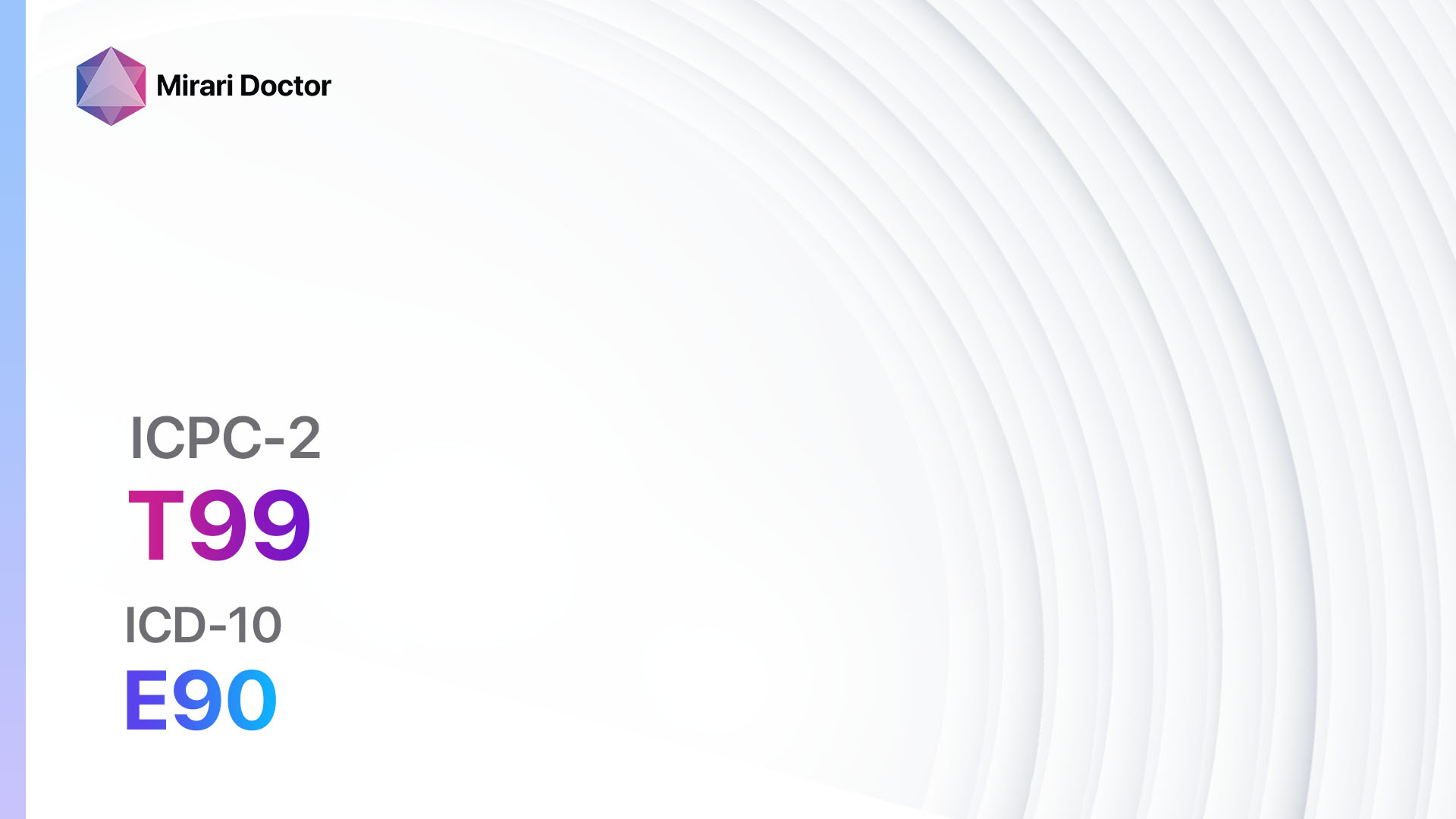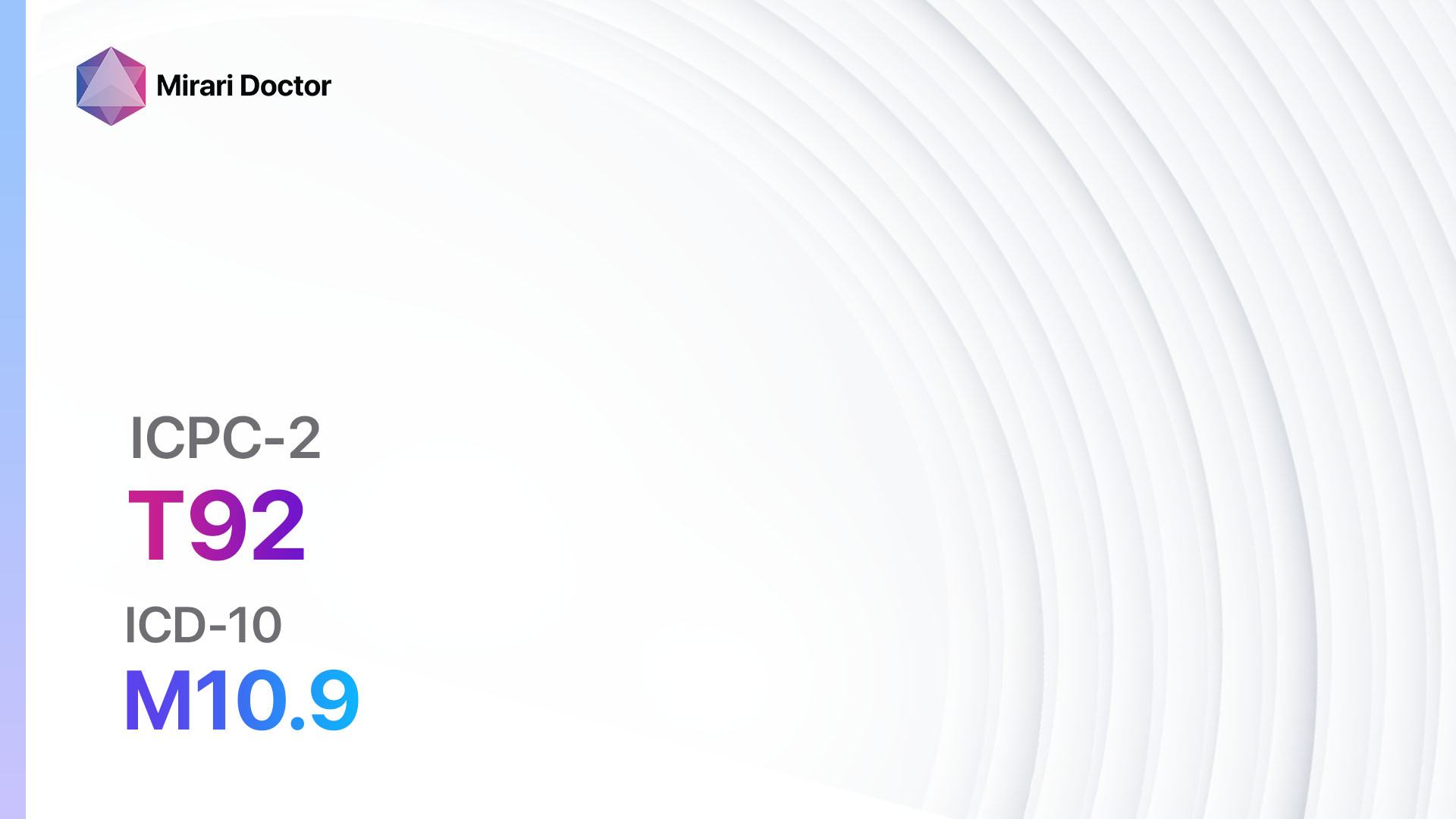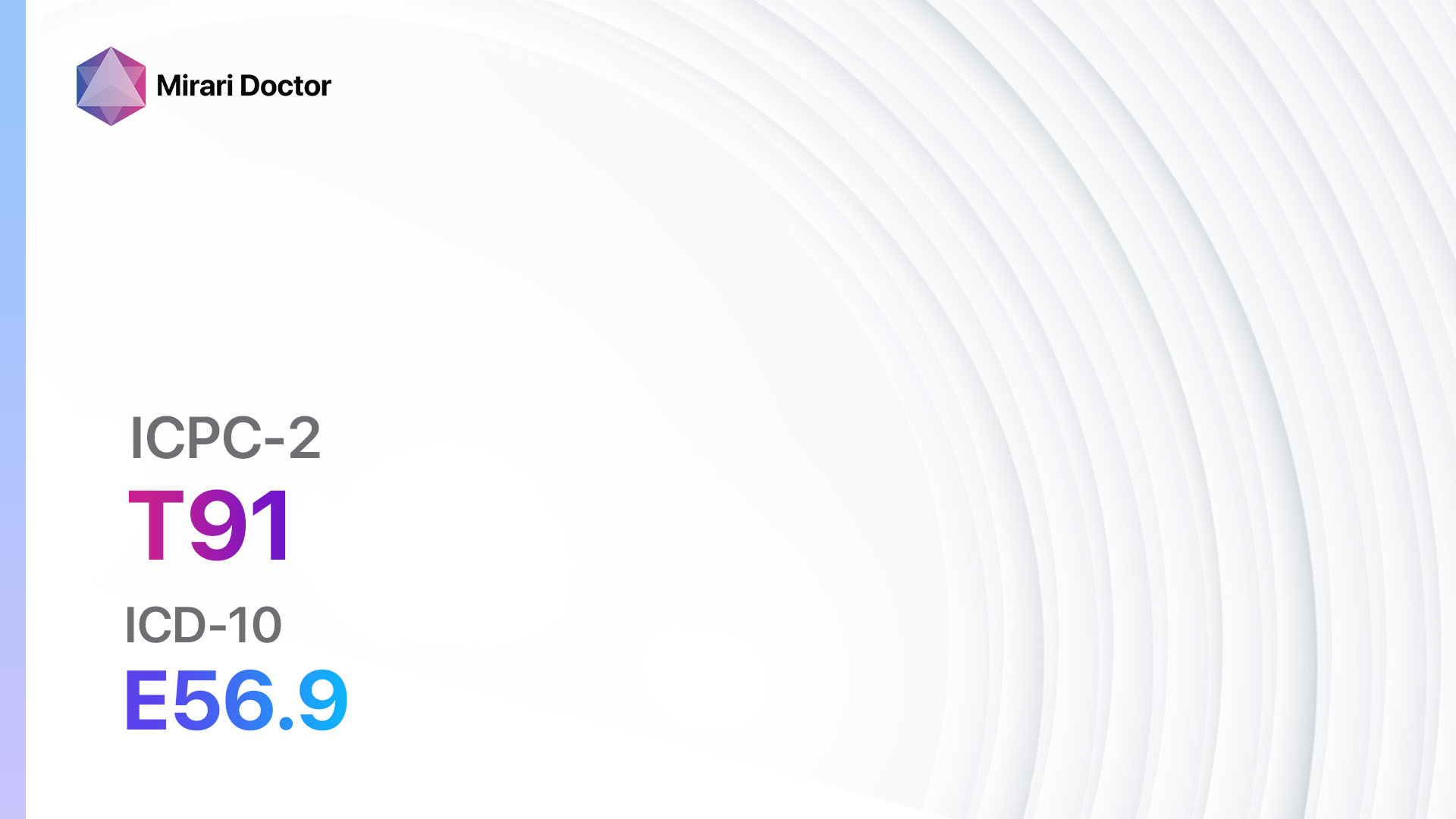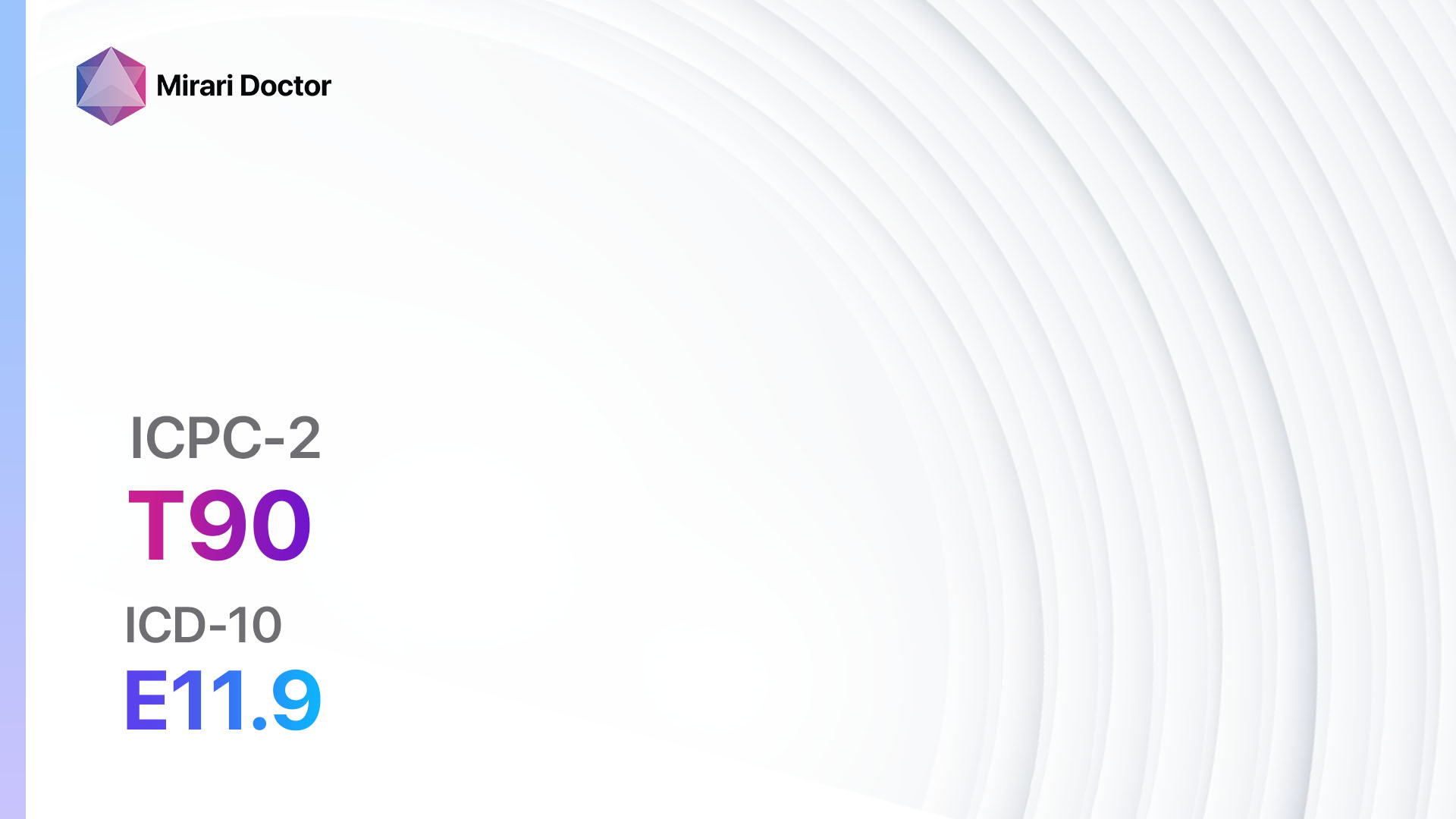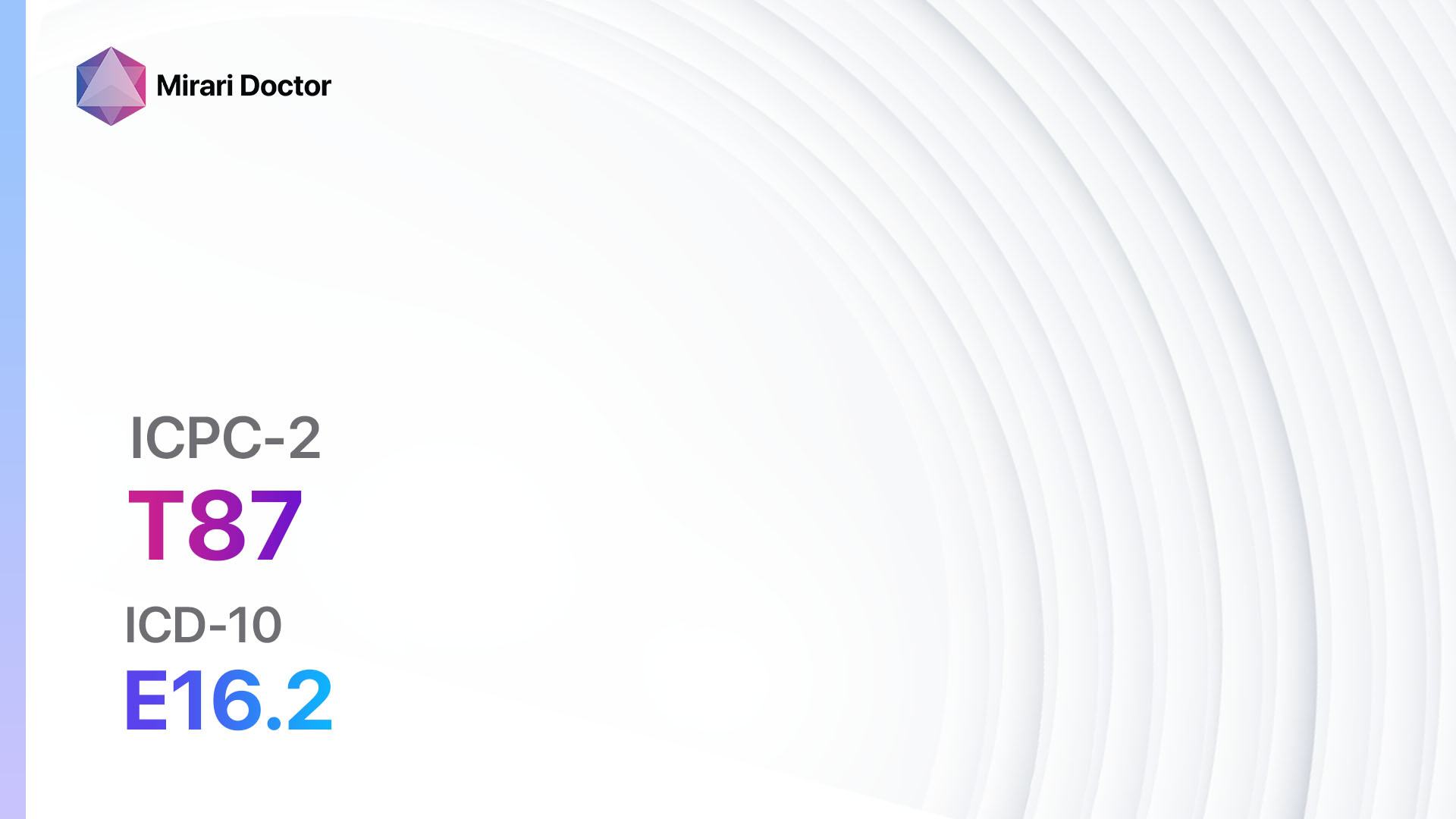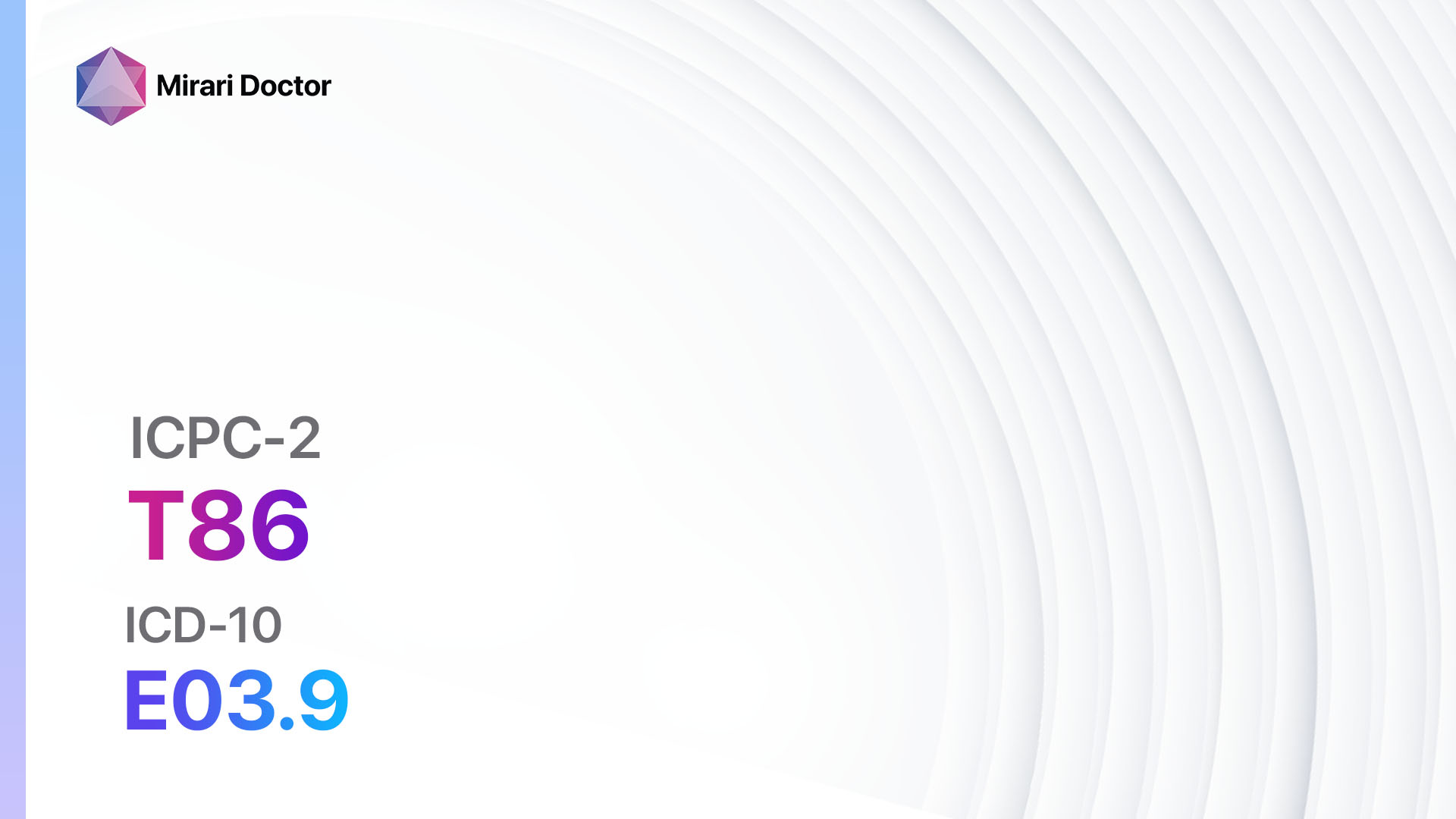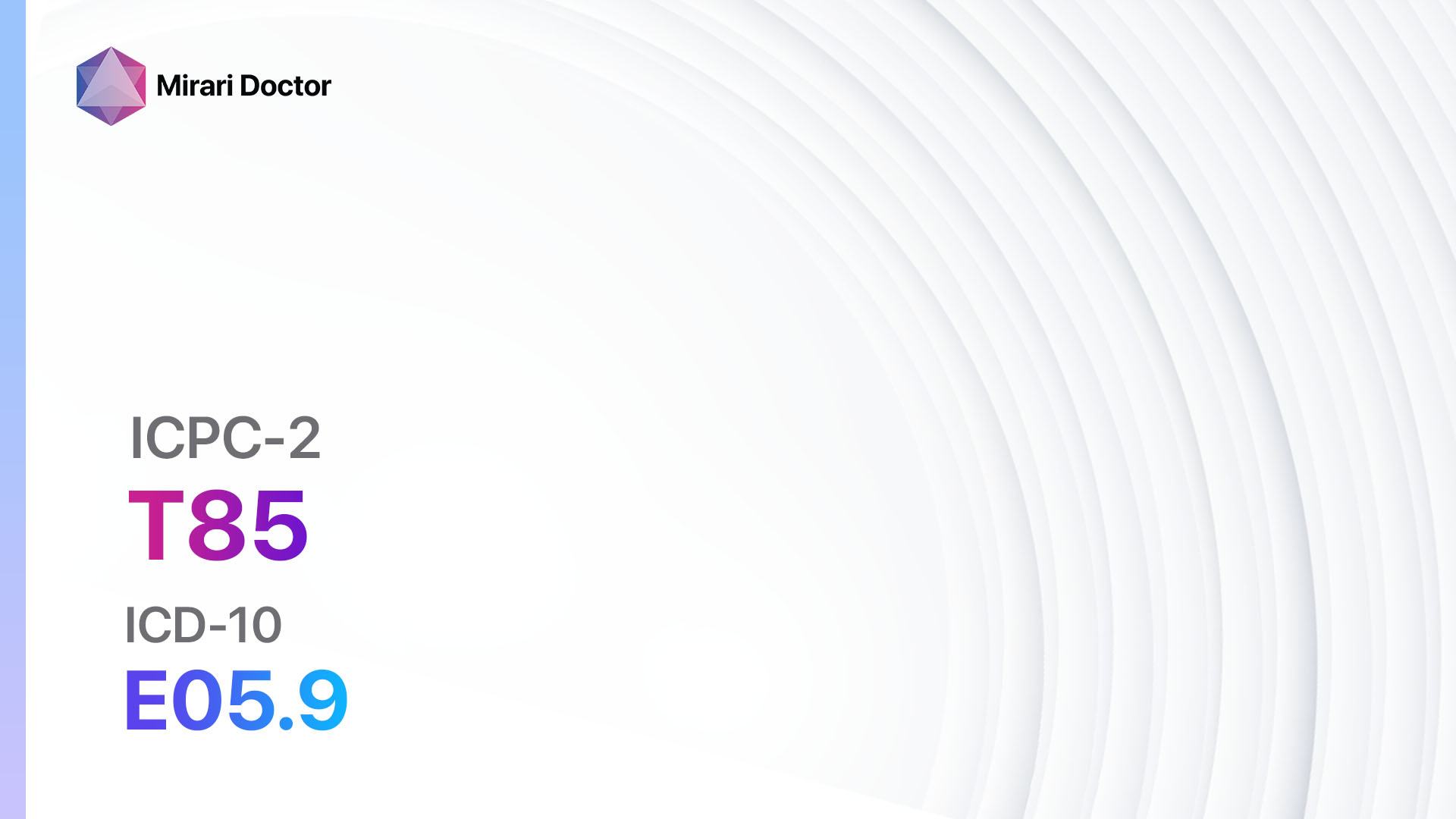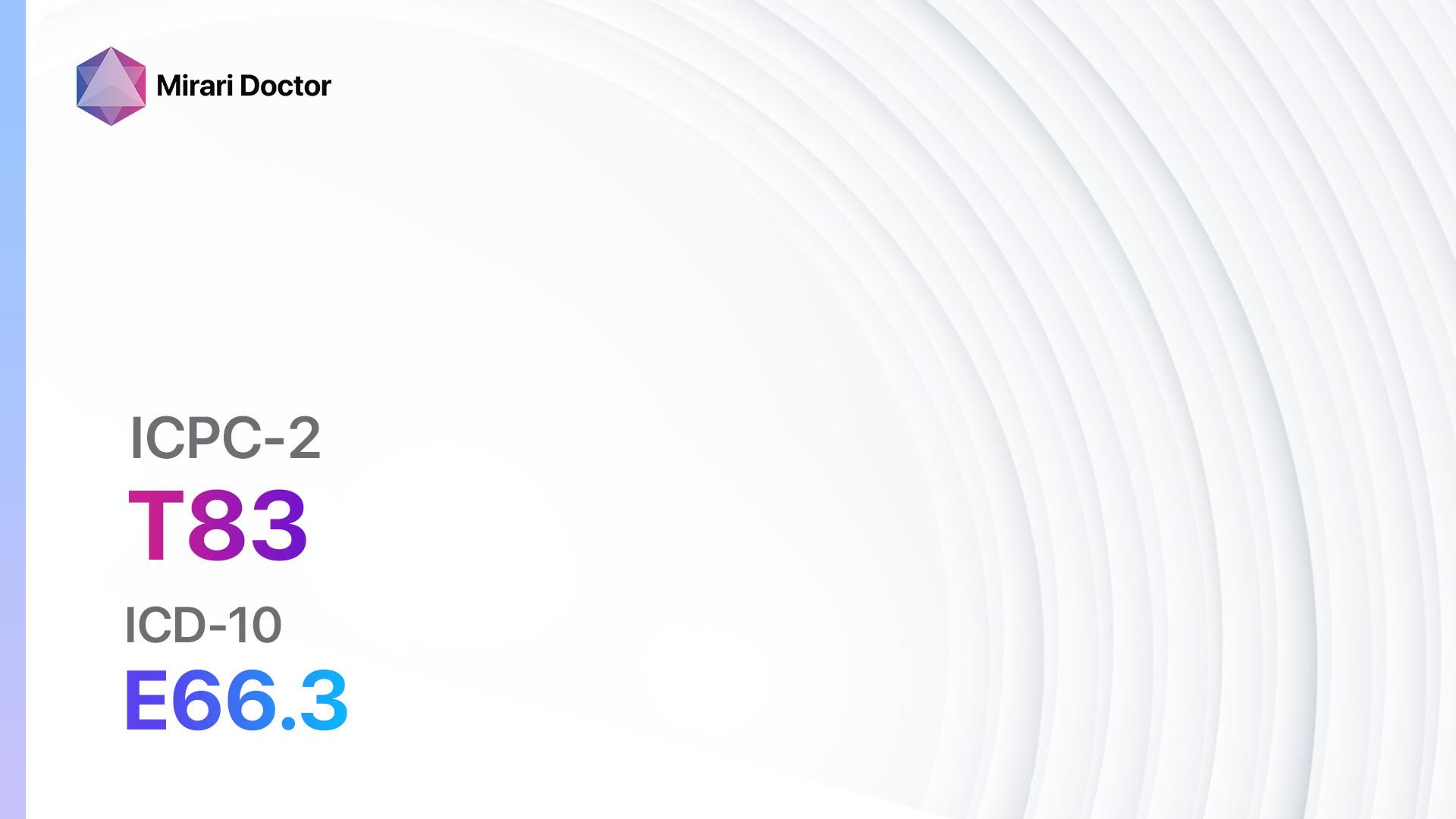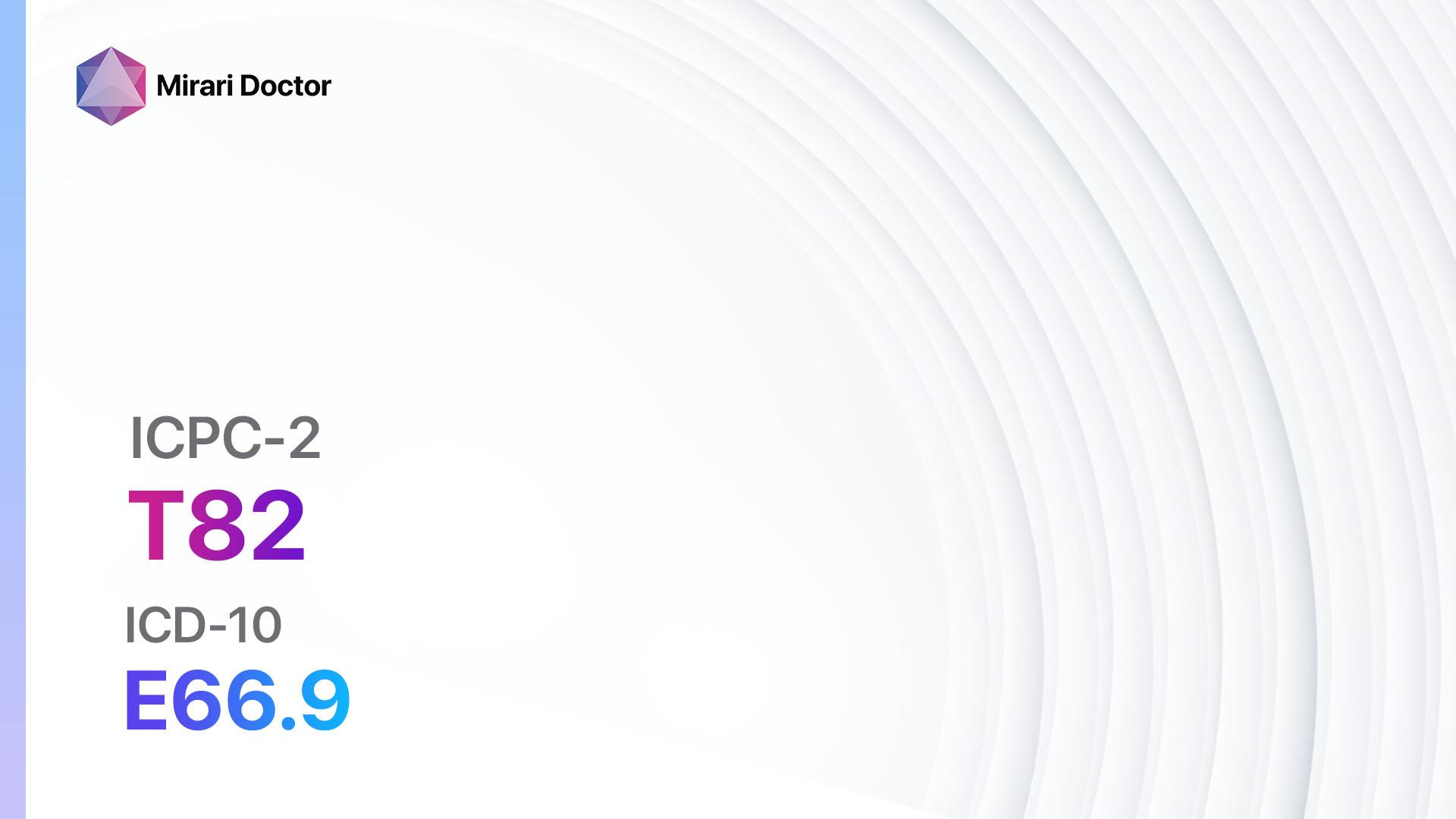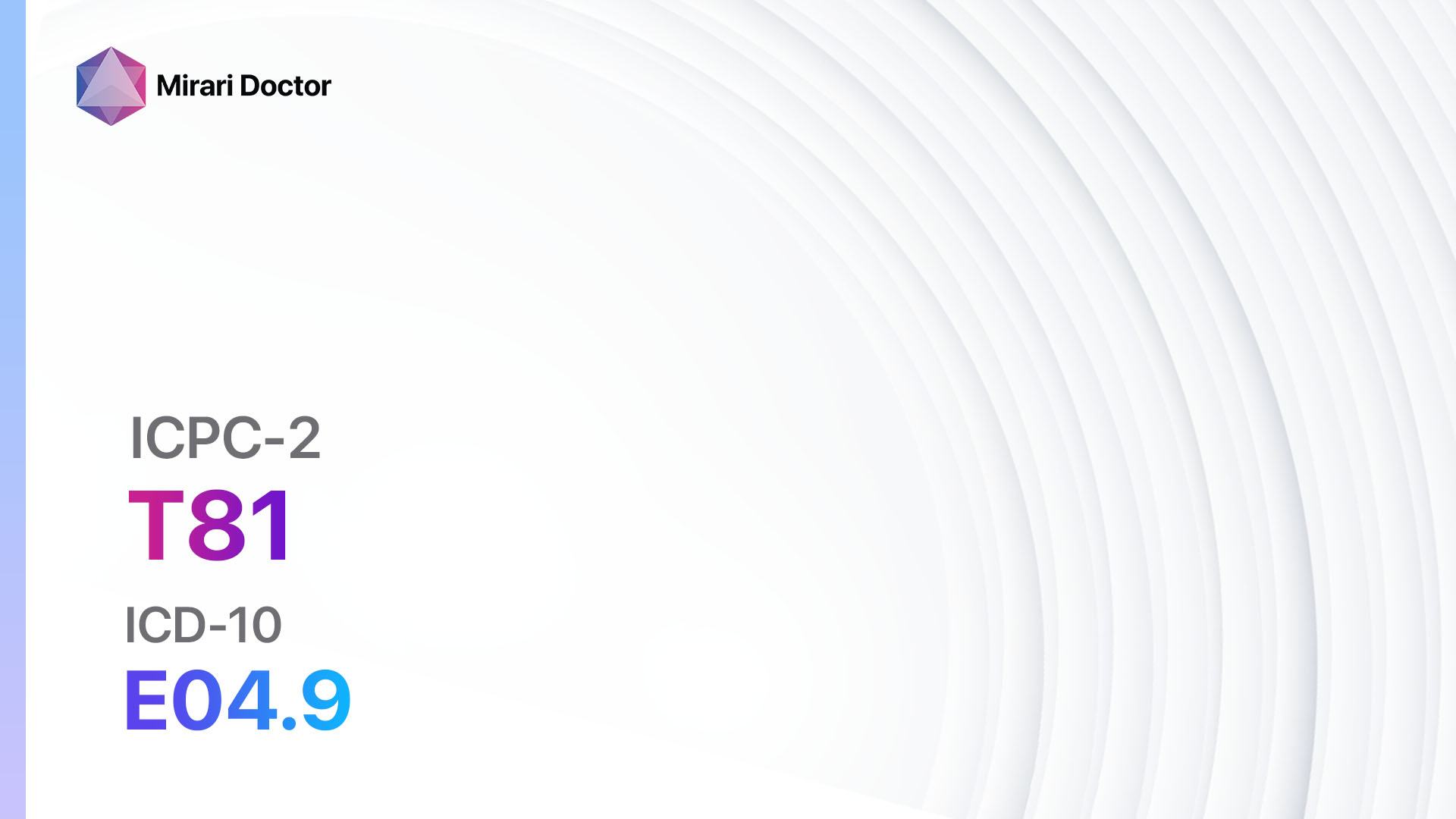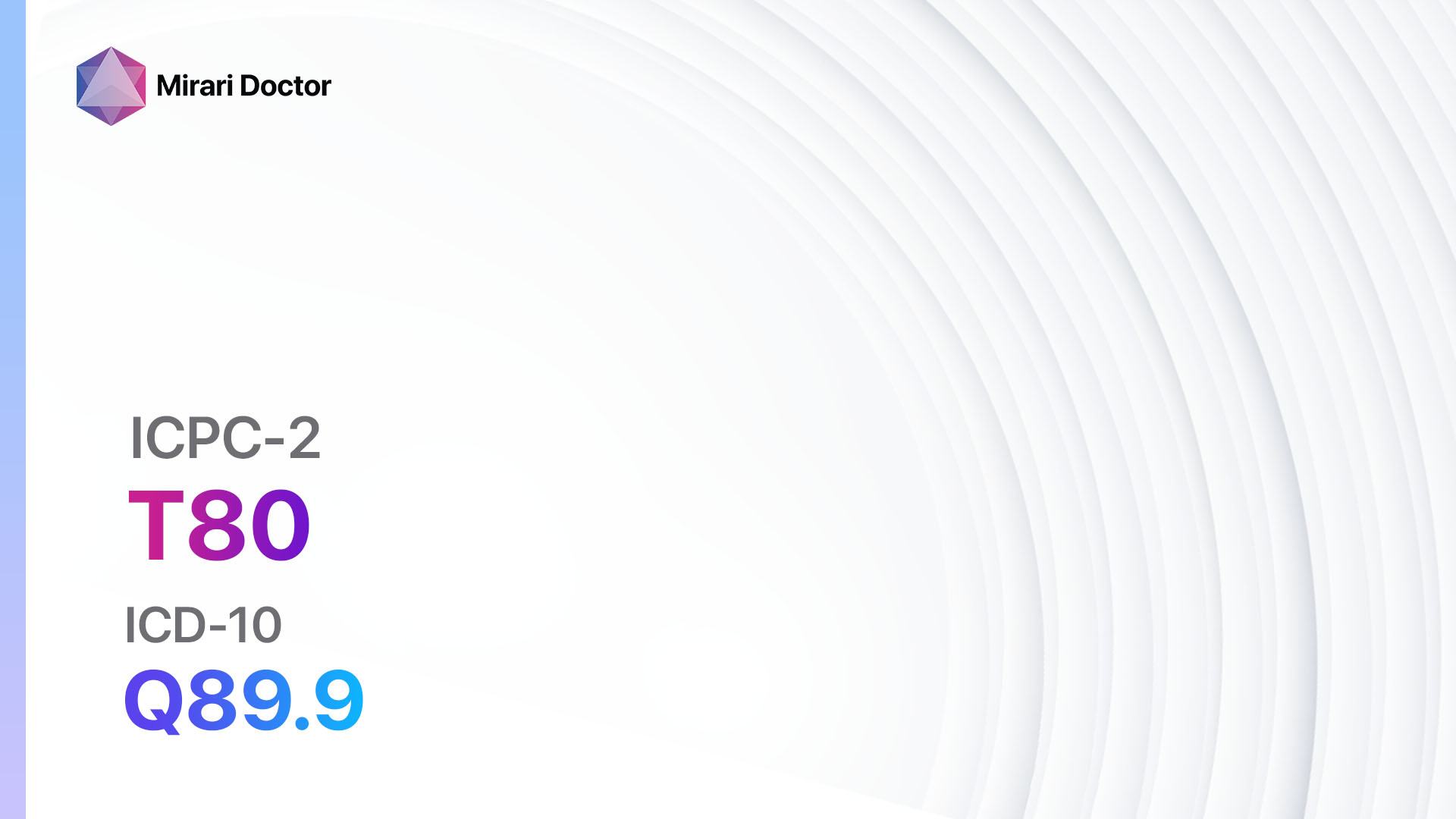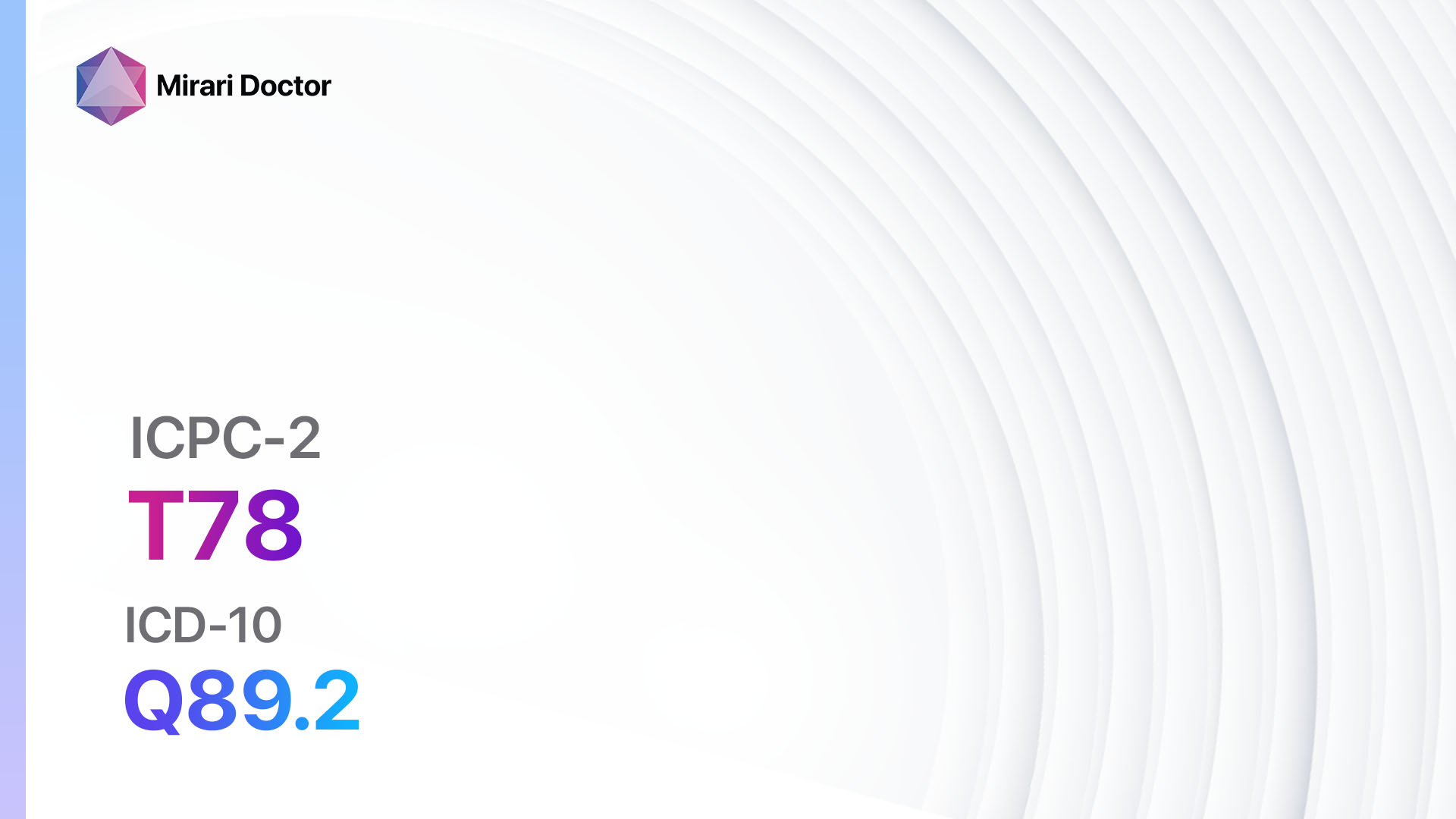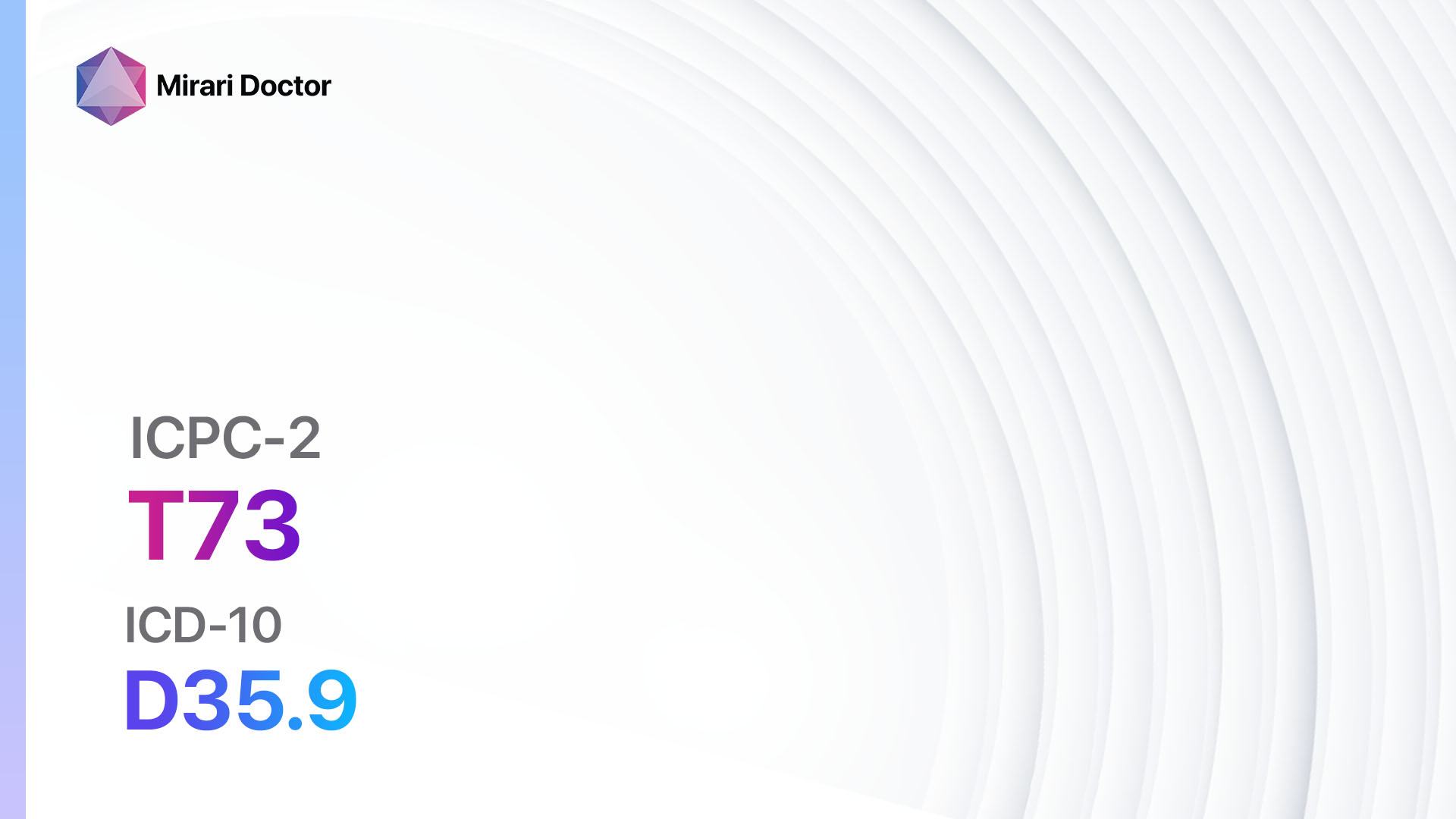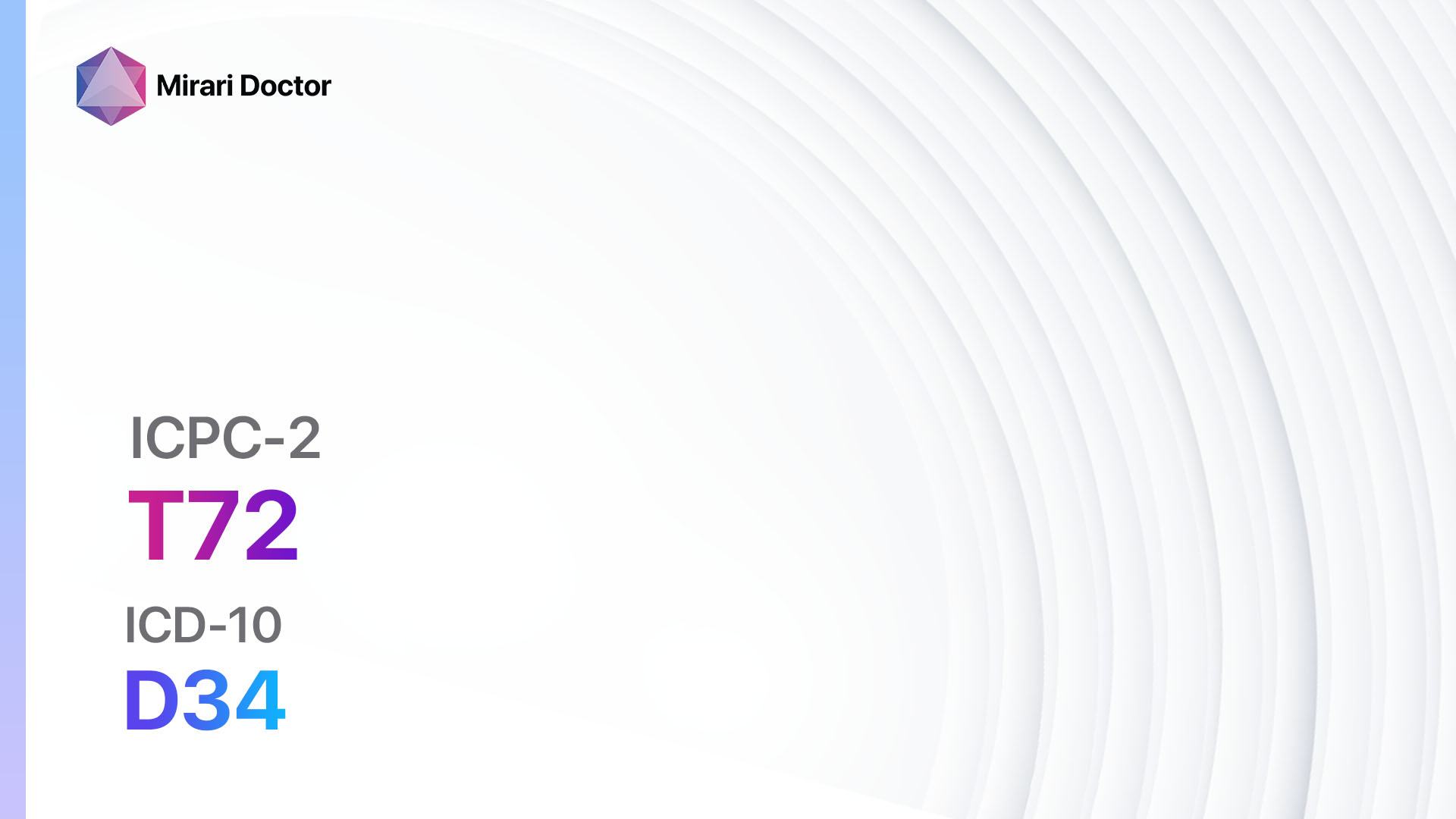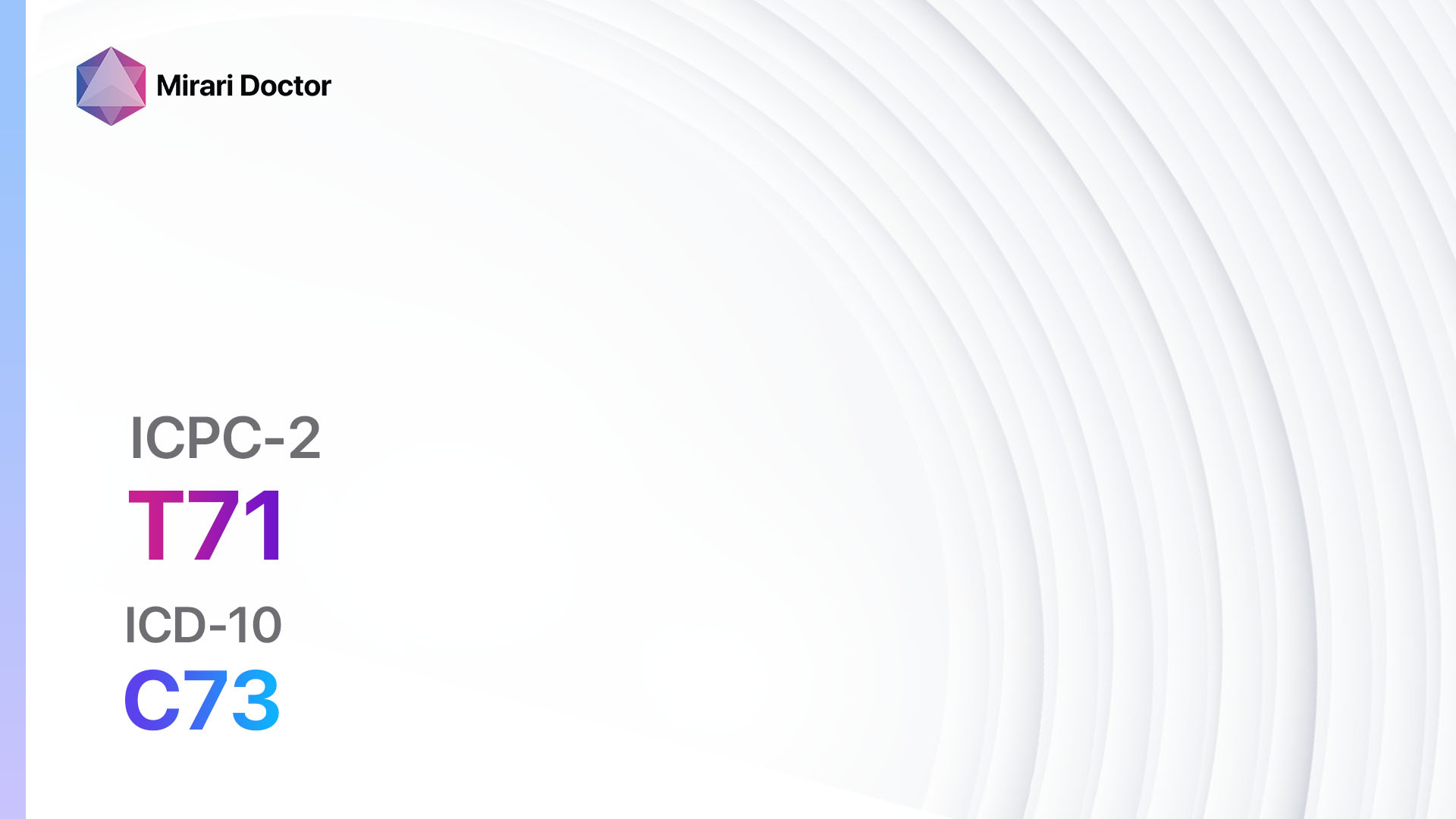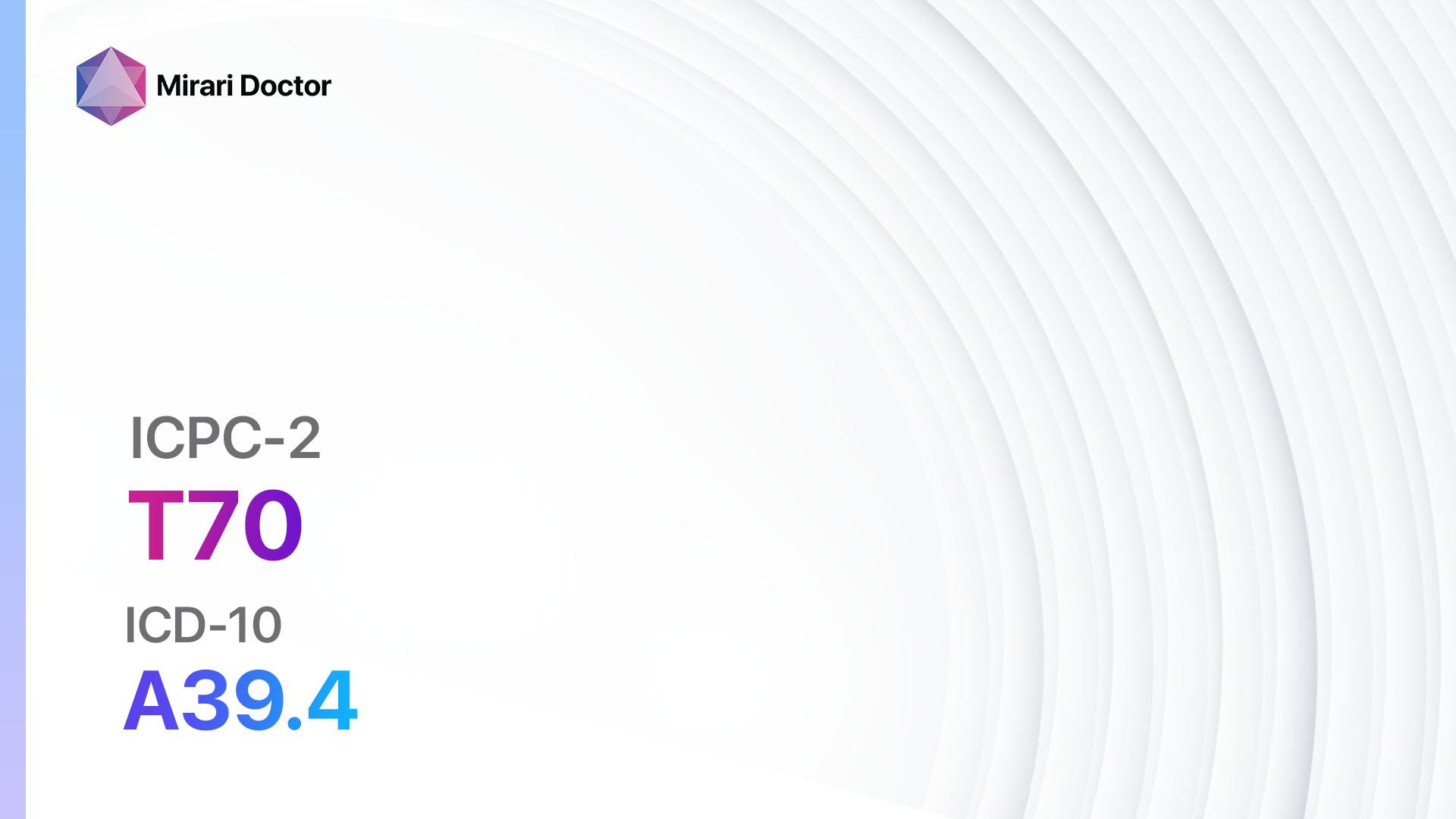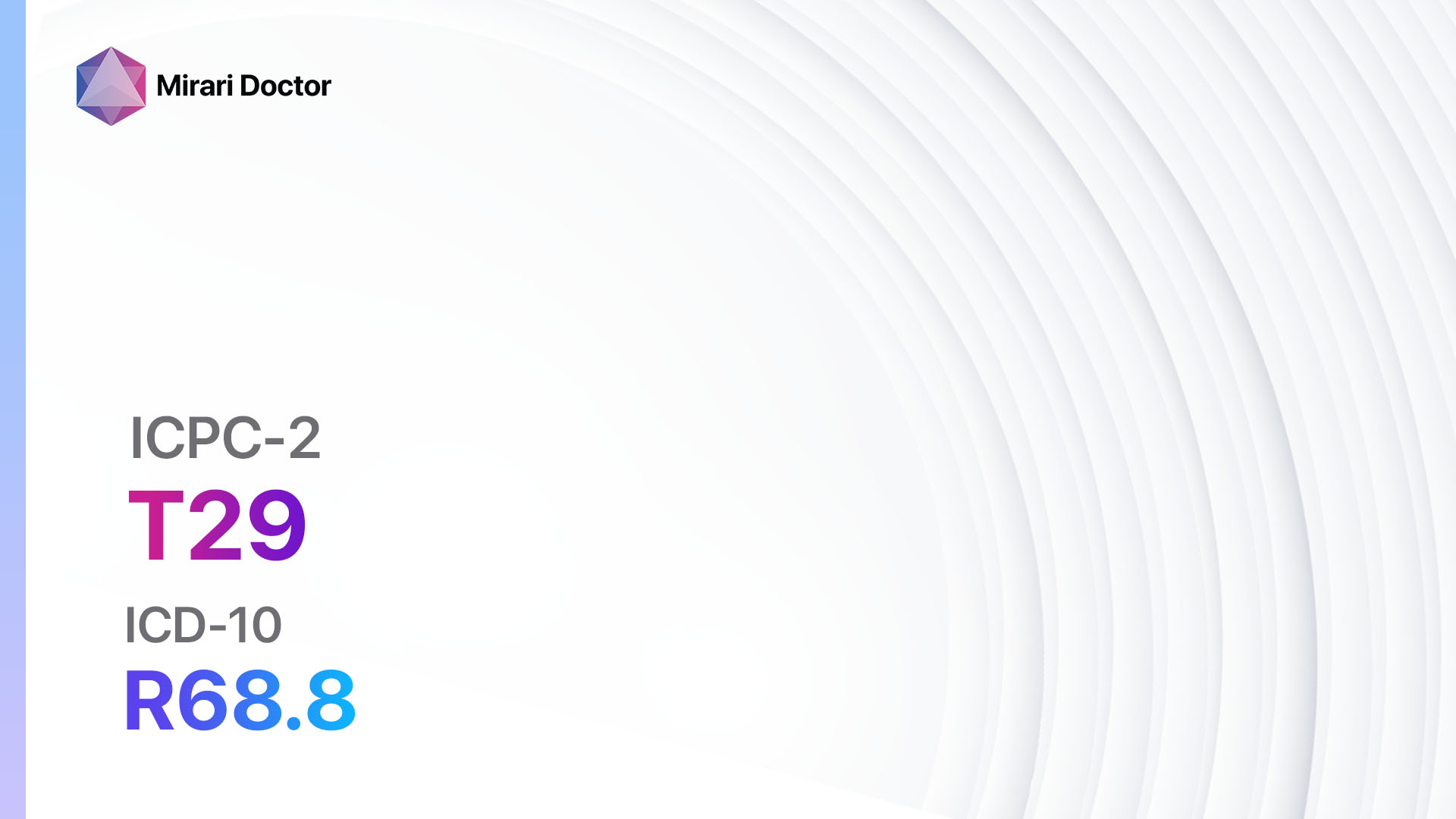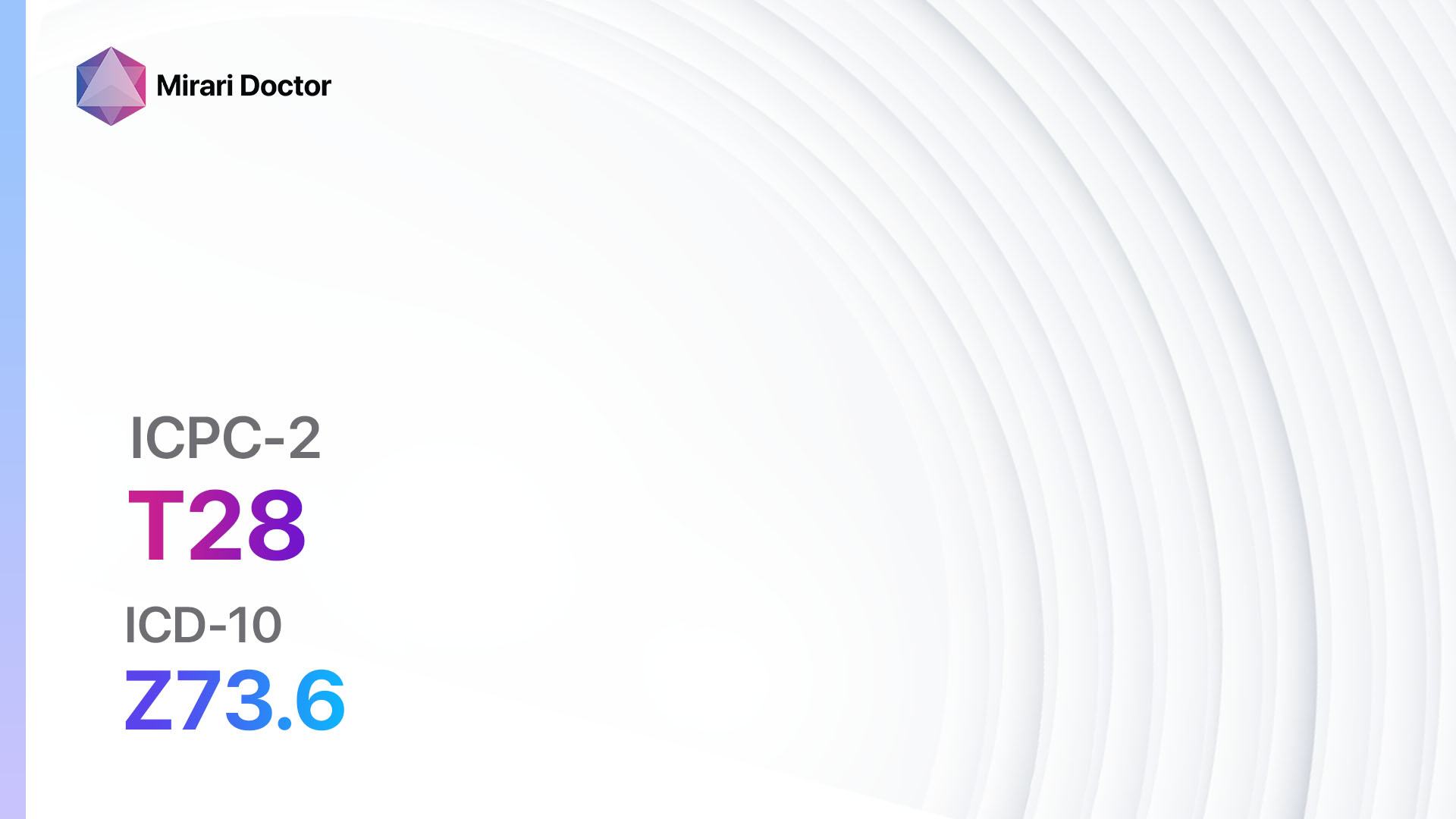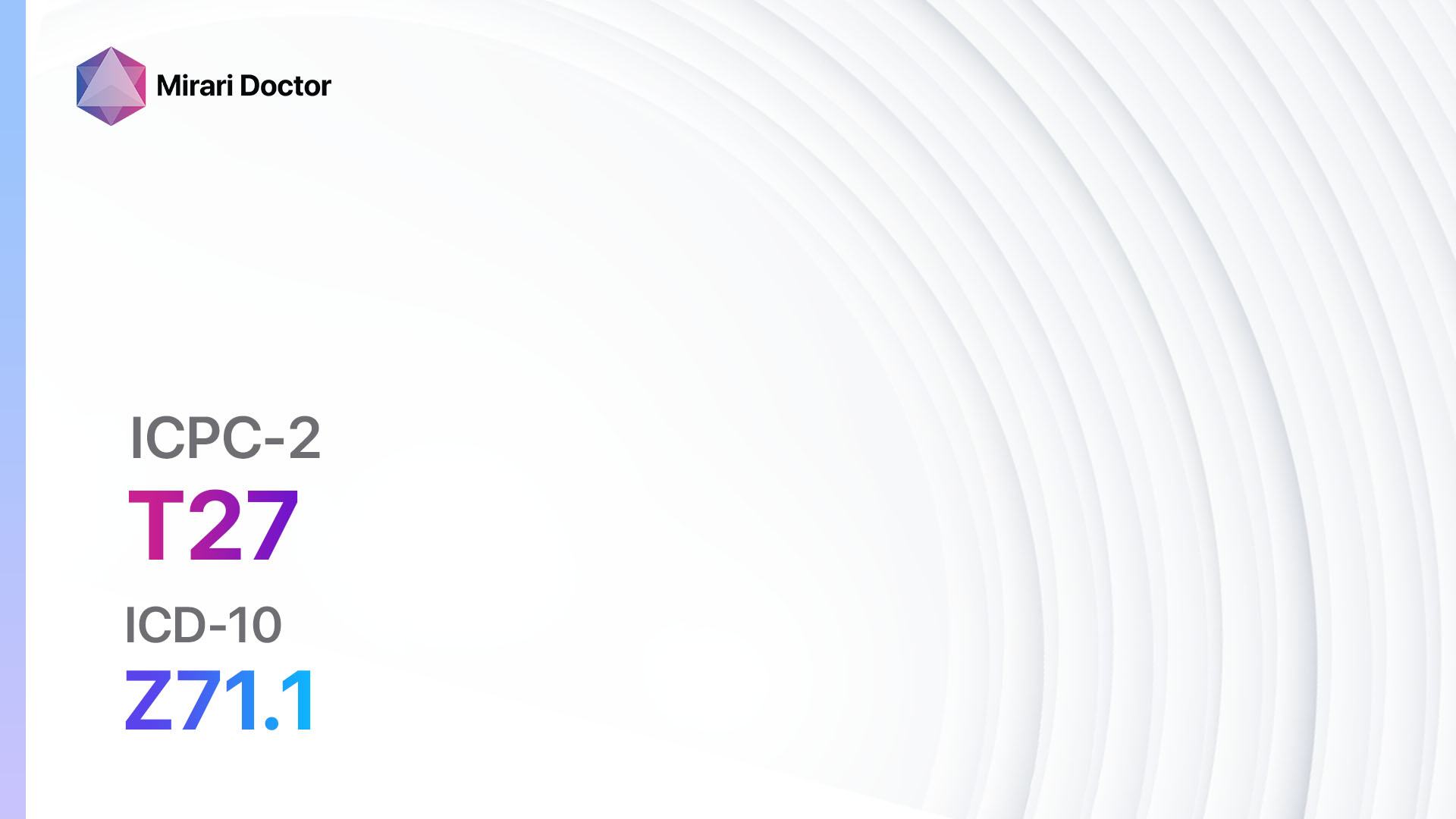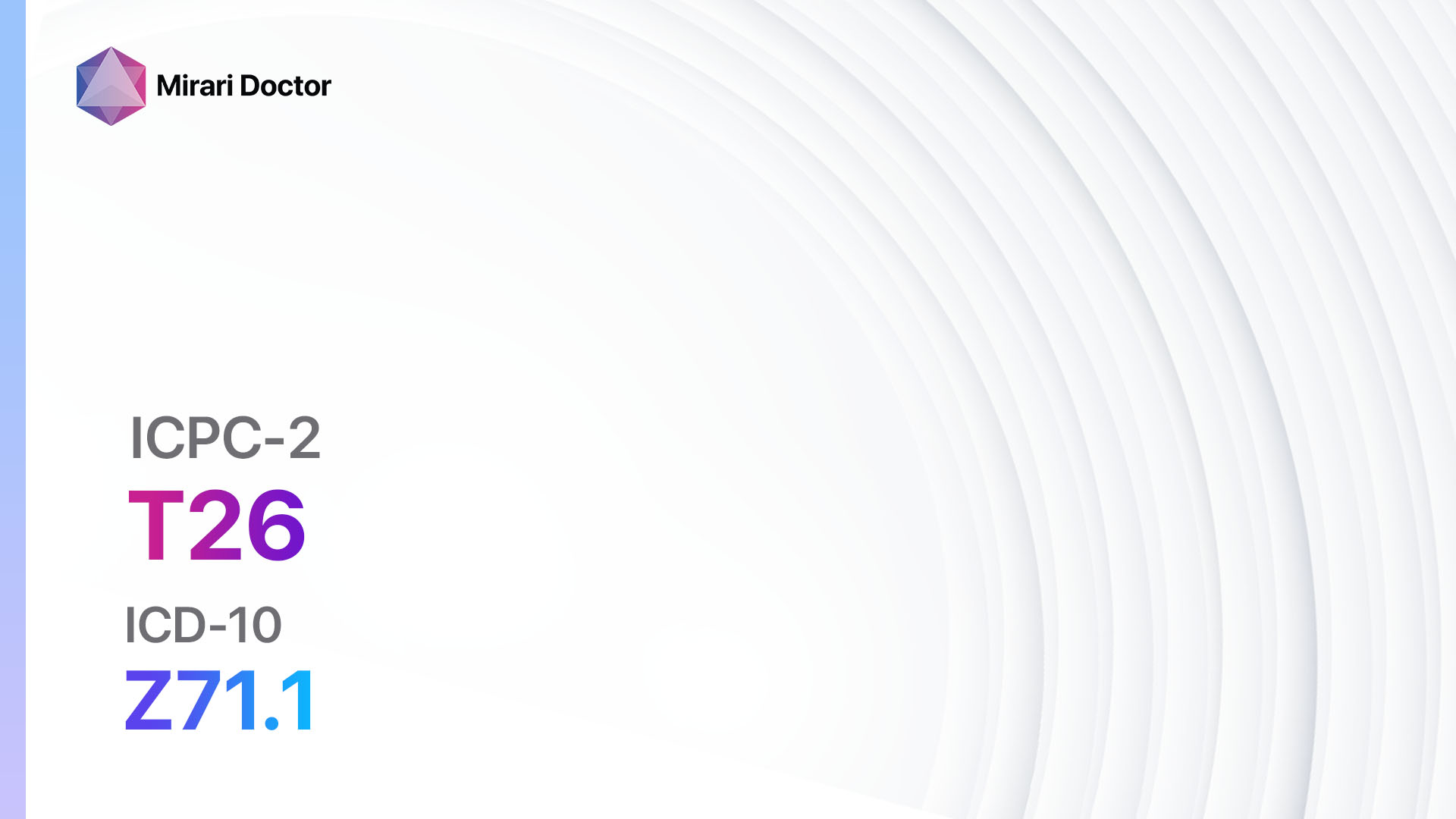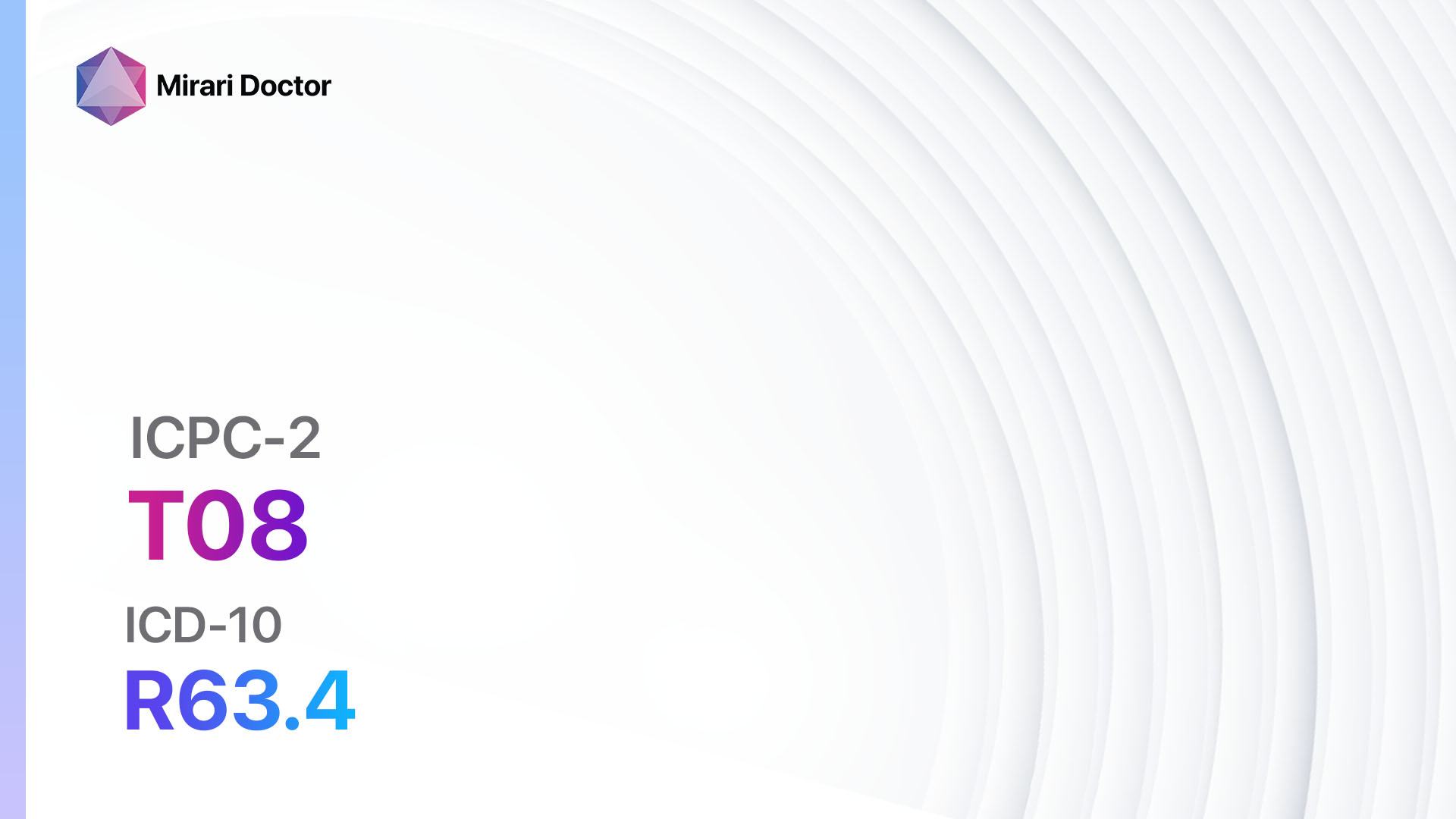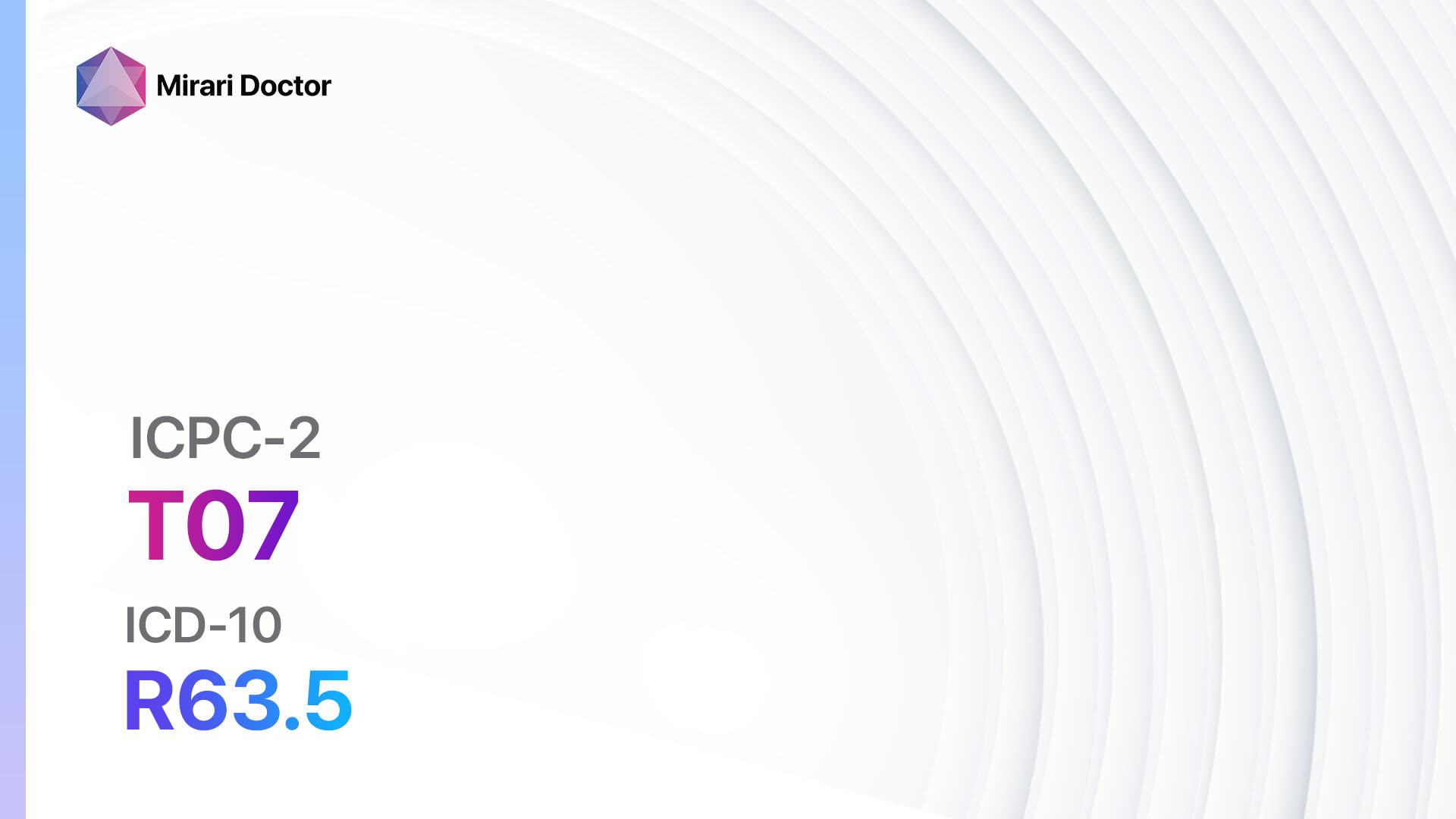
Introduction
Weight gain is a common condition that occurs when an individual’s body weight increases beyond what is considered healthy or normal[1]. It can be caused by a variety of factors, including poor diet, lack of physical activity, hormonal imbalances, certain medications, and underlying medical conditions[2]. Excessive weight gain can lead to various health problems, such as obesity, diabetes, heart disease, and joint pain[3]. The aim of this guide is to provide an overview of the symptoms, causes, diagnostic steps, possible interventions, and lifestyle changes that can help manage weight gain.
Codes
Symptoms
- Increased body weight
- Clothes feeling tighter
- Difficulty fitting into previously well-fitting clothes
- Visible increase in body fat
- Increased appetite
- Fatigue and low energy levels
- Difficulty in performing physical activities
- Joint pain or discomfort[6]
Causes
- Poor diet: Consuming high-calorie, processed foods, sugary drinks, and excessive amounts of carbohydrates can contribute to weight gain[7].
- Lack of physical activity: Leading a sedentary lifestyle and not engaging in regular exercise can lead to weight gain[8].
- Hormonal imbalances: Conditions such as hypothyroidism, polycystic ovary syndrome (PCOS), and Cushing’s syndrome can cause weight gain[9].
- Medications: Certain medications, such as antidepressants, antipsychotics, corticosteroids, and oral contraceptives, may have weight gain as a side effect[10].
- Underlying medical conditions: Conditions such as insulin resistance, metabolic syndrome, and certain genetic disorders can contribute to weight gain.
Diagnostic Steps
Medical History
- Gather information about the patient’s eating habits, physical activity levels, and any recent changes in weight.
- Ask about any underlying medical conditions, hormonal imbalances, or medications that may contribute to weight gain.
- Assess the patient’s family history of obesity or related conditions.
- Inquire about any symptoms or signs of underlying medical conditions, such as fatigue, joint pain, or changes in appetite.
Physical Examination
- Measure the patient’s height, weight, and body mass index (BMI).
- Assess the distribution of body fat, particularly around the abdomen.
- Check for signs of hormonal imbalances, such as excessive hair growth in women with PCOS.
- Evaluate the patient’s overall physical fitness and mobility.
Laboratory Tests
- Fasting blood glucose: To assess for diabetes or insulin resistance.
- Lipid profile: To evaluate cholesterol and triglyceride levels.
- Thyroid function tests: To check for thyroid hormone imbalances.
- Hormone levels: To assess for hormonal imbalances, such as estrogen or testosterone.
- Liver function tests: To evaluate liver health and rule out liver disease.
- Complete blood count (CBC): To check for any underlying infections or anemia.
Diagnostic Imaging
- Abdominal ultrasound: To assess the liver, gallbladder, and other abdominal organs for any abnormalities.
- Dual-energy X-ray absorptiometry (DEXA) scan: To measure body composition, including fat and muscle mass.
- Magnetic resonance imaging (MRI): To evaluate the distribution of body fat and assess for any underlying structural abnormalities.
Other Tests
- Oral glucose tolerance test: To assess for impaired glucose tolerance or diabetes.
- Genetic testing: To identify any underlying genetic disorders that may contribute to weight gain.
- Sleep study: To evaluate for sleep apnea, a condition associated with weight gain.
Follow-up and Patient Education
- Schedule regular follow-up appointments to monitor progress and make any necessary adjustments to the treatment plan.
- Provide education on healthy eating habits, portion control, and the importance of regular physical activity.
- Offer resources and support for weight management, such as nutrition counseling or exercise programs.
- Encourage the patient to set realistic goals and track their progress.
Possible Interventions
Traditional Interventions
Medications:
Top 5 drugs for weight management:
- Orlistat (brand name: Xenical):
- Cost: $50-$200 per month.
- Contraindications: Chronic malabsorption syndrome, cholestasis.
- Side effects: Oily spotting, gas, fecal urgency.
- Severe side effects: Severe liver injury, allergic reactions.
- Drug interactions: Cyclosporine, levothyroxine.
- Warning: Take a multivitamin supplement containing fat-soluble vitamins.
- Phentermine (brand names: Adipex-P, Lomaira):
- Cost: $30-$100 per month.
- Contraindications: History of cardiovascular disease, uncontrolled hypertension.
- Side effects: Increased heart rate, insomnia, dry mouth.
- Severe side effects: Primary pulmonary hypertension, valvular heart disease.
- Drug interactions: MAO inhibitors, selective serotonin reuptake inhibitors (SSRIs).
- Warning: Avoid alcohol and monitor blood pressure regularly.
- Liraglutide (brand name: Saxenda):
- Cost: $600-$1200 per month.
- Contraindications: Personal or family history of medullary thyroid carcinoma.
- Side effects: Nausea, diarrhea, constipation.
- Severe side effects: Pancreatitis, gallbladder disease.
- Drug interactions: Insulin, oral hypoglycemic agents.
- Warning: Monitor for signs of pancreatitis and discontinue if suspected.
- Bupropion/naltrexone (brand name: Contrave):
- Cost: $200-$400 per month.
- Contraindications: Uncontrolled hypertension, seizure disorder.
- Side effects: Nausea, constipation, headache.
- Severe side effects: Seizures, suicidal thoughts.
- Drug interactions: Monoamine oxidase inhibitors (MAOIs), opioids.
- Warning: Monitor blood pressure and discontinue if seizures occur.
- Metformin (brand names: Glucophage, Fortamet):
- Cost: $10-$50 per month.
- Contraindications: Renal impairment, liver disease.
- Side effects: Nausea, diarrhea, abdominal discomfort.
- Severe side effects: Lactic acidosis, vitamin B12 deficiency.
- Drug interactions: Cimetidine, furosemide.
- Warning: Monitor renal function and discontinue if lactic acidosis is suspected.
Alternative Drugs:
- Lorcaserin (brand name: Belviq): Cost: $200-$400 per month.
- Phentermine/topiramate (brand name: Qsymia): Cost: $100-$200 per month.
- Bupropion/zonisamide (brand name: Empatic): Cost: $200-$400 per month.
- Naltrexone/bupropion (brand name: Mysimba): Cost: $200-$400 per month.
- Liraglutide (brand name: Victoza): Cost: $600-$1200 per month.
Surgical Procedures:
- Bariatric surgery: Various procedures, such as gastric bypass or gastric sleeve, can be performed to reduce the size of the stomach and limit food intake. Cost: $15,000 to $30,000.
Alternative Interventions
- Acupuncture: May help reduce appetite and improve overall well-being. Cost: $60-$120 per session.
- Hypnotherapy: Can help address emotional eating and promote healthier habits. Cost: $75-$150 per session.
- Mindfulness-based stress reduction: Focuses on mindful eating and stress management. Cost: $200-$300 for an 8-week program.
- Herbal supplements: Certain herbs, such as green tea extract and Garcinia cambogia, are claimed to aid in weight loss. Cost: Varies depending on the specific supplement.
- Meal replacement programs: Pre-packaged meals or shakes can be used to replace regular meals. Cost: $200-$400 per month.
Lifestyle Interventions
- Dietary modifications: Encourage a balanced diet rich in fruits, vegetables, lean proteins, and whole grains. Cost: Varies depending on food choices.
- Regular physical activity: Recommend at least 150 minutes of moderate-intensity aerobic exercise per week. Cost: Varies depending on the chosen activity (e.g., gym membership, fitness classes).
- Behavioral therapy: Address emotional and psychological factors that contribute to weight gain. Cost: $75-$150 per session.
- Support groups: Provide a supportive environment for individuals to share experiences and receive guidance. Cost: Varies (some groups may be free).
- Stress management: Encourage stress-reducing activities, such as yoga, meditation, or deep breathing exercises. Cost: Varies depending on the chosen activity.
It is important to note that the cost ranges provided are approximate and may vary depending on the location and availability of the interventions. It is recommended to consult with a healthcare professional for personalized advice and guidance regarding weight gain management.
Mirari Cold Plasma Alternative Intervention
Understanding Mirari Cold Plasma
- Safe and Non-Invasive Treatment: Mirari Cold Plasma is a safe and non-invasive treatment option for various skin conditions. It does not require incisions, minimizing the risk of scarring, bleeding, or tissue damage.
- Efficient Extraction of Foreign Bodies: Mirari Cold Plasma facilitates the removal of foreign bodies from the skin by degrading and dissociating organic matter, allowing easier access and extraction.
- Pain Reduction and Comfort: Mirari Cold Plasma has a local analgesic effect, providing pain relief during the treatment, making it more comfortable for the patient.
- Reduced Risk of Infection: Mirari Cold Plasma has antimicrobial properties, effectively killing bacteria and reducing the risk of infection.
- Accelerated Healing and Minimal Scarring: Mirari Cold Plasma stimulates wound healing and tissue regeneration, reducing healing time and minimizing the formation of scars.
Mirari Cold Plasma Prescription
Video instructions for using Mirari Cold Plasma Device – T07 Weight gain (ICD-10:R63.5)
| Mild | Moderate | Severe |
| Mode setting: 4 (Diabetes Therapy) Location: 4 (Heart, Bile & Pancreas) Morning: 15 minutes, Evening: 15 minutes |
Mode setting: 4 (Diabetes Therapy) Location: 4 (Heart, Bile & Pancreas) Morning: 30 minutes, Lunch: 30 minutes, Evening: 30 minutes |
Mode setting: 4 (Diabetes Therapy) Location: 4 (Heart, Bile & Pancreas) Morning: 30 minutes, Lunch: 30 minutes, Evening: 30 minutes |
| Mode setting: 7 (Immunotherapy) Location: 1 (Sacrum) Morning: 15 minutes, Evening: 15 minutes |
Mode setting: 7 (Immunotherapy) Location: 1 (Sacrum) Morning: 30 minutes, Lunch: 30 minutes, Evening: 30 minutes |
Mode setting: 7 (Immunotherapy) Location: 1 (Sacrum) Morning: 30 minutes, Lunch: 30 minutes, Evening: 30 minutes |
| Mode setting: 4 (Diabetes Therapy) Location: 4 (Heart, Bile & Pancreas) Morning: 15 minutes, Evening: 15 minutes |
Mode setting: 4 (Diabetes Therapy) Location: 4 (Heart, Bile & Pancreas) Morning: 30 minutes, Lunch: 30 minutes, Evening: 30 minutes |
Mode setting: 4 (Diabetes Therapy) Location: 4 (Heart, Bile & Pancreas) Morning: 30 minutes, Lunch: 30 minutes, Evening: 30 minutes |
| Total Morning: 45 minutes approx. $7.50 USD, Evening: 45 minutes approx. $7.50 USD |
Total Morning: 90 minutes approx. $15 USD, Lunch: 90 minutes approx. $15 USD, Evening: 90 minutes approx. $15 USD |
Total Morning: 90 minutes approx. $15 USD, Lunch: 90 minutes approx. $15 USD, Evening: 90 minutes approx. $15 USD |
| Usual treatment for 7-60 days approx. $105 USD – $900 USD | Usual treatment for 6-8 weeks approx. $1,890 USD – $2,520 USD |
Usual treatment for 3-6 months approx. $4,050 USD – $8,100 USD
|
 |
|
Use the Mirari Cold Plasma device to treat Weight gain effectively.
WARNING: MIRARI COLD PLASMA IS DESIGNED FOR THE HUMAN BODY WITHOUT ANY ARTIFICIAL OR THIRD PARTY PRODUCTS. USE OF OTHER PRODUCTS IN COMBINATION WITH MIRARI COLD PLASMA MAY CAUSE UNPREDICTABLE EFFECTS, HARM OR INJURY. PLEASE CONSULT A MEDICAL PROFESSIONAL BEFORE COMBINING ANY OTHER PRODUCTS WITH USE OF MIRARI.
Step 1: Cleanse the Skin
- Start by cleaning the affected area of the skin with a gentle cleanser or mild soap and water. Gently pat the area dry with a clean towel.
Step 2: Prepare the Mirari Cold Plasma device
- Ensure that the Mirari Cold Plasma device is fully charged or has fresh batteries as per the manufacturer’s instructions. Make sure the device is clean and in good working condition.
- Switch on the Mirari device using the power button or by following the specific instructions provided with the device.
- Some Mirari devices may have adjustable settings for intensity or treatment duration. Follow the manufacturer’s instructions to select the appropriate settings based on your needs and the recommended guidelines.
Step 3: Apply the Device
- Place the Mirari device in direct contact with the affected area of the skin. Gently glide or hold the device over the skin surface, ensuring even coverage of the area experiencing.
- Slowly move the Mirari device in a circular motion or follow a specific pattern as indicated in the user manual. This helps ensure thorough treatment coverage.
Step 4: Monitor and Assess:
- Keep track of your progress and evaluate the effectiveness of the Mirari device in managing your Weight gain. If you have any concerns or notice any adverse reactions, consult with your health care professional.
Note
This guide is for informational purposes only and should not replace the advice of a medical professional. Always consult with your healthcare provider or a qualified medical professional for personal advice, diagnosis, or treatment. Do not solely rely on the information presented here for decisions about your health. Use of this information is at your own risk. The authors of this guide, nor any associated entities or platforms, are not responsible for any potential adverse effects or outcomes based on the content.
Mirari Cold Plasma System Disclaimer
- Purpose: The Mirari Cold Plasma System is a Class 2 medical device designed for use by trained healthcare professionals. It is registered for use in Thailand and Vietnam. It is not intended for use outside of these locations.
- Informational Use: The content and information provided with the device are for educational and informational purposes only. They are not a substitute for professional medical advice or care.
- Variable Outcomes: While the device is approved for specific uses, individual outcomes can differ. We do not assert or guarantee specific medical outcomes.
- Consultation: Prior to utilizing the device or making decisions based on its content, it is essential to consult with a Certified Mirari Tele-Therapist and your medical healthcare provider regarding specific protocols.
- Liability: By using this device, users are acknowledging and accepting all potential risks. Neither the manufacturer nor the distributor will be held accountable for any adverse reactions, injuries, or damages stemming from its use.
- Geographical Availability: This device has received approval for designated purposes by the Thai and Vietnam FDA. As of now, outside of Thailand and Vietnam, the Mirari Cold Plasma System is not available for purchase or use.
References
- Hruby, A., & Hu, F. B. (2015). The Epidemiology of Obesity: A Big Picture. PharmacoEconomics, 33(7), 673–689.
- Wright, S. M., & Aronne, L. J. (2012). Causes of obesity. Abdominal Radiology, 37(5), 730–732.
- Guh, D. P., Zhang, W., Bansback, N., Amarsi, Z., Birmingham, C. L., & Anis, A. H. (2009). The incidence of co-morbidities related to obesity and overweight: A systematic review and meta-analysis. BMC Public Health, 9(1), 88.
- WONCA International Classification Committee. (1998). ICPC-2: International Classification of Primary Care. Oxford University Press.
- World Health Organization. (2016). International statistical classification of diseases and related health problems (10th revision, 5th ed.).
- Wearing, S. C., Hennig, E. M., Byrne, N. M., Steele, J. R., & Hills, A. P. (2006). Musculoskeletal disorders associated with obesity: a biomechanical perspective. Obesity Reviews, 7(3), 239–250.
- Mozaffarian, D., Hao, T., Rimm, E. B., Willett, W. C., & Hu, F. B. (2011). Changes in Diet and Lifestyle and Long-Term Weight Gain in Women and Men. New England Journal of Medicine, 364(25), 2392–2404.
- Wareham, N. J., van Sluijs, E. M., & Ekelund, U. (2005). Physical activity and obesity prevention: a review of the current evidence. Proceedings of the Nutrition Society, 64(2), 229–247.
- Kokkoris, P., & Pi-Sunyer, F. X. (2003). Obesity and endocrine disease. Endocrinology and Metabolism Clinics of North America, 32(4), 895–914.
- Leslie, W. S., Hankey, C. R., & Lean, M. E. J. (2007). Weight gain as an adverse effect of some commonly prescribed drugs: a systematic review. QJM: An International Journal of Medicine, 100(7), 395–404.
Related articles
Made in USA


